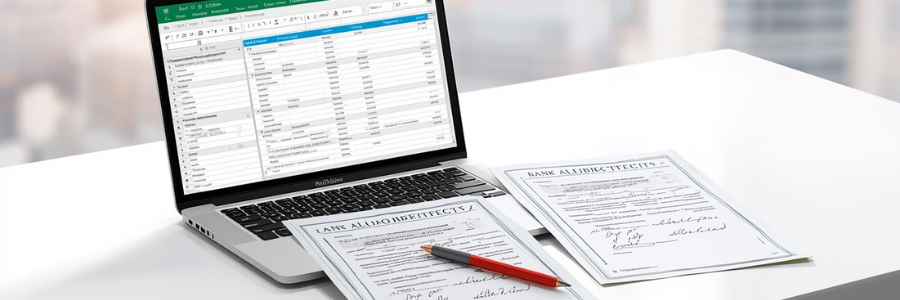Shipping Bill Filing Requires AD Code Registration
India is a hub of business, and half of it is driven by import-export activities. Fundamentally, exportation is for any nation to grow its economy. In the broadest sense, exportation is a method to grow GDP, earn foreign currency, provide jobs, and provide competitiveness. Nevertheless, the effort can be undermined by an unverified exporter who gains customs clearance. To keep foreign trade transparent and valuable, the Indian government mandates company registration for the AD code. The AD code, which contains the 14-digit numbers, allows exporters to generate the shipping bill. This is what is required during customs approval. But why is only the shipping bill mandatory for customs approval? This guide will explore the importance of the AD code that is required for shipping bill generation. Read more in the next section.
Understanding Shipping Bill Filing for Exportation
At the ports or other routes, the exporters are required to showcase the shipping bill for goods clearance. The bill serves as the formal declaration of the shipment’s details. The important details that are highlighted in the shipping invoice are the information of the exporter-importer, the description, the quantity, and the goods’ values. Only shipping bill holders can obtain customs clearance. At the same time, filing the bill accurately and at the exact time is a legal formality. It demonstrates that the businesses adhere to specific trade laws, which basically prevent legal penalties.
What are the key Roles of the Shipping Bill for Customs Clearance?
For the exporters, the shipping bills serve as the customs document. It is filed by the exporters for the goods clearance before leaving the nation. The breakdown of its major role:
- Acts as Goods Declaration: In the eyes of customs authorities, a shipping bill is a formal declaration. Through it, the authority gets the information about the goods’ nature, quantity, and value.
- Duty and Tax Assessment: The information on the bill helps the customs authority determine any export duty applicable to the goods.
- Statistical Data Collection: For the generation of national export statistics, having accurate and recorded data of exporters is crucial. In the same place, the shipping invoice provides valuable information that is used for economic analysis and policy formulation.
- Ensure Compliance: With bills, the customs authority gets signals about exporters’ adherence to regulations, controls, and restrictions.
- Primary Requirement: It is the fundamental document to start the export procedure. It enables exporters to get essential approval before starting the shipment process.
How Many Types of Shipping Bills in India?
In India, businesses are active in various export categories. Therefore, to reduce challenges, the government of India divided the shipping bills into four categories:
Dutiable Shipping Bill (Yellow Paper)
The exporting of goods, which is basically subject to an export duty, uses the dutiable shipping bill for customs clearance.
Duty-Free Shipping bill (White Paper)
Having it, which is also recognized as a white shipping bill, the exporter isn’t required to pay any export duty.
Drawback Shipping Bill (Green paper)
It is filled by the exporters who want to claim a refund of customs duties. Green paper is primarily used to print, but in the end, it converts to white paper. Paper after the drawback is paid.
Shipping Bill for DEPB Scheme (Blue Paper)
The exporters who become eligible for the Duty Entitlement Passbook Scheme get the benefits of duty credit. The bill is printed on blue paper.
Other shipping bills
An ex-bond shipping bill is used for those goods that are subject to re-exporting. Such goods are stored in a bonded warehouse. Meanwhile, the coastal shipping bill is used for the movement of goods between different ports within the same country.
How is AD Code Registration linked with Shipping Bills?

For the generation of shipping bills on ICEGATE, the exporters are required to register a 14-digit unique code. The code is basically issued by the RBI’s authorized banks where the exporter holds a current account. When an exporter registers their code, it directly links the bank account of the exporter to the ICEGATE portal as well as to the customs department. AD code allows the credit of the benefits and refund schemes directly to the exporter’s bank account.
The Process for Filing a Shipping Bill with AD Code
For the export shipping bill clearance, an AD code is mandatory. Basically, the AD code registration is linked with the shipping bill process, which makes it seamless for customs clearance. Illustration for customs bill generation:
Step 1: Apply for AD code registration
Request to the bank for the AD code. The 14-digit code letter will be issued on the letterhead of the bank.
Note: Exporters can only obtain the AD code from those banks that deal with foreign exchange.
Step 2: Register the AD code with Customs
Register the AD code letter with the customs department at the ports from which you want to export goods.
Step 3: Register on ICEGATE
Navigate the ICEGATE portal. Register both the AD code letter and the ICE number on the portal. Do not forget to submit the other supported documents, such as the packing list and invoice.
Step 4: Submit the Shipping Bill
In the electronic format, complete the shipping bill details. Upon successful submission, you are required to verify the pointed details.
Step 5: Generate Customs Bills
Again, the details will be verified by the Assistant Commissioner (Export). Upon verification, a “Let Export Bill” will be issued to the exporter.
What is a Let Export Order?
The “Let-Export Order” is basically for the exporters who apply for a shipping bill. The issuing authority is a customs officer who grants it after the businesses complete all legal formalities. LEO serves as the legal authorization that allows exporters to trade internationally from a specific port. In short, LEO is the last phase of the customs clearance process. It determines that exporters, as well as goods, align with all legal and regulatory requirements. Upon LEO approval, the exporters get approvals for the transportation to another country.
Final Thoughts | Filing shipping bills via AD Code in India
To get the customs clearance at ports, the shipping bills are legal identifiers. Filing for a customs shipping bill is mandatory for anyone engaged in export-import activities. ICEGATE is the primary portal. For the shipping bill, filing with AD code registration is a legal formality. By following the comprehensive process, the exporters can access government benefits such as duty drawbacks, IGST refund, and many more. Apart from the customs bill generation, the authorized dealer code further helps in tracking foreign exchange transactions. Clears your doubts with LegalRaasta experts and guides you for registration of the AD code.
FAQs | Export shipping bill clearance with AD Code
1. What is the AD code in a shipping bill?
Ans. The AD code, which contains the 14-digit code, is issued by the RBI’s authorized dealer code to exporters. Code links the current bank account with export/import activities. While code is used on ICEGATE for shipping bill generation.
2. What details are required to create an export shipping bill?
Ans. To create the shipping bill, mention the details about the exporter and buyer’s cargo particulars (description, quantity, value, HS code, weight, package details), transportation details, commercial details, etc.
3. What is the LEO bill?
Ans. LEO in broad: Let the exporter’s order be received by the exporter. LEO serves as the final legal customs approval, which is issued by the customs officer.
4. How to download the LEO shipping bill copy?
Ans. To download a copy of the Let Export Order shipping bill, the exporters are required to navigate the ICEGATE portal. The process follows as: Visit the ICEGATE portal < E-Sanchit or document download section < mention bill number or date range < download LEO shipping bill into PDF format.
5. What is the use of ICEGATE?
Ans. It is the Indian national customs portal. The portal is used for filing customs documents digitally.









